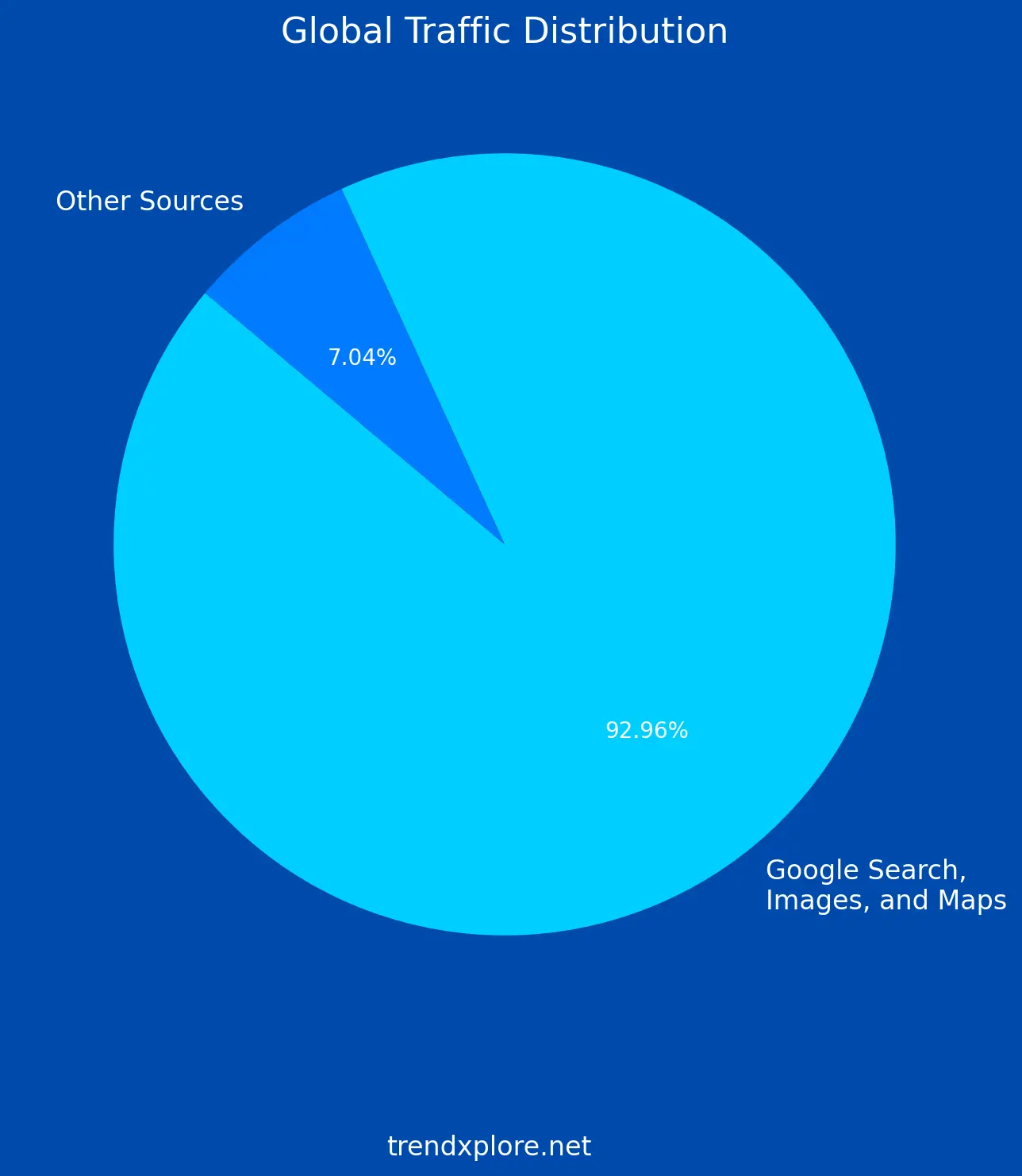Amateur blogger mistakes are one thing most bloggers who aren’t well-informed about blogging do when they start.
Did you know that over 4.4 million blog posts are published every day? Yet, many amateur bloggers struggle to gain traction. Blogging can be a fantastic way to share thoughts, grow a brand, or make money. But it’s easy to make mistakes if you’re just starting out, and these errors can hold you back from success.
Like me, when I started, I made lots of mistakes—from not checking my grammar to neglecting SEO practices. The list goes on and on. But don’t worry!
This article will explore and dismantle the most common amateur blogger mistakes. You’ll learn why they matter and, more importantly, how to avoid them. By the end, you’ll be better equipped to thrive in blogging.
Table of Contents
ToggleWhat Defines an Amateur Blogger?
An amateur blogger is someone new to the world of blogging. They might be passionate but lack the experience that seasoned bloggers have. Unlike professionals, amateur bloggers often make errors that can hinder their progress.
So, what sets them apart? For starters, amateur bloggers usually write as a hobby. They might not have a clear strategy or know much about SEO. They often focus more on content than on promoting it. These bloggers might also skip important steps like editing or researching keywords.
Amateur blogger mistakes are common because beginners tend to learn by trial and error. They might not fully understand their audience or how to engage them. This often leads to inconsistent posting, poor design choices, and weak social media presence. All of these are traits that can hold back a blog’s success.
But don’t worry—everyone starts somewhere. Recognizing these common characteristics is the first step to improving your blogging skills.
Top 10 Amateur Blogger Mistakes
Mistake 1: Inconsistent Posting Schedule
One of the most common amateur blogger mistakes is an inconsistent posting schedule. When you don’t post regularly, your readers might lose interest. They may forget about your blog or find content elsewhere. Inconsistency can also confuse search engines, making it harder for your blog to rank well.
So, why is this so harmful? Readers crave fresh content. When they visit your blog, they expect to see new posts. If you don’t deliver, they might not come back. Over time, this can lead to lower traffic and less engagement. Search engines, like Google, also favor blogs that update frequently. An erratic schedule could mean fewer opportunities to appear in search results.
The solution? Create a content calendar. Plan your posts in advance and stick to a schedule. Start with a pace that’s realistic for you, whether it’s once a week or twice a month. Consistency is key. Even if you can’t post every day, regularity will keep your audience engaged and help your blog grow steadily.
Mistake 2: Neglecting SEO Best Practices
Another frequent mistake made by amateur bloggers is neglecting SEO best practices. SEO, or Search Engine Optimization, is what helps your blog get discovered online. Without it, your posts might never reach the audience you want. Many beginners focus solely on content and forget that SEO is crucial for visibility.
According to SparkToro, a staggering 92.96% of global online traffic is driven by Google Search, Google Images, and Google Maps.
 Pin
Pin
Ignoring SEO can prevent your blog from showing up in search results. Even if you write great content, it won’t matter if no one can find it. Search engines like Google use specific criteria to rank websites. If your blog isn’t optimized, it might get buried beneath millions of other pages.
To avoid this, start with basic SEO tips. Use relevant keywords in your titles and headings. Write meta descriptions for your posts. These are the short snippets that appear in search results. Also, make sure your blog loads quickly and is mobile-friendly. These small changes can make a big difference in how your blog performs.
Mistake 3: Poor Content Quality
A key amateur blogger mistake is producing low-quality content. Readers visit blogs to find valuable information, entertainment, or insights. If your content doesn’t deliver, they won’t stick around. Poor grammar, lack of research, or unclear writing can drive readers away quickly.
Low-quality content turns off your audience and affects your blog’s credibility. Readers who find your posts unhelpful or hard to read are less likely to return. Worse, they might share negative feedback, hurting your blog’s reputation. Search engines also rank content based on quality. If your posts aren’t up to par, they may not appear in search results.
To improve content quality, start by doing thorough research. Make sure you understand the topic before you write. Take the time to edit your work, checking for grammar mistakes and clarity. Reading your post out loud can help you catch errors and improve the flow.
Also, consider your audience’s needs. Write with them in mind. Ask yourself if your post provides value or answers a question they might have. By focusing on quality, you can avoid one of the most damaging amateur blogger mistakes. Your readers will appreciate it, and your blog will grow.
4. Lack of Target Audience Understanding
One major amateur blogger mistake is not knowing your target audience. When you don’t understand who you’re writing for, it’s easy to create content that misses the mark. Irrelevant posts can confuse or alienate your readers, causing them to lose interest in your blog.
If your content doesn’t resonate with your audience, they won’t engage with it. This lack of connection can lead to lower traffic, fewer comments, and minimal shares. Without a clear understanding of your audience, you might also struggle to find topics that matter to them. This can result in wasted time and effort on posts that don’t drive any value.
So, how do you avoid this? Start by identifying your target audience. Think about who your ideal reader is. What are their interests, needs, and challenges? You can use tools like Google Analytics to see who’s visiting your blog and which posts they engage with most. Conducting surveys or asking for feedback directly from your readers can also provide valuable insights.
Once you understand your audience, tailor your content to their preferences. Write about topics that matter to them, using a tone and style they’ll appreciate. By doing so, you’ll avoid this common amateur blogger mistake and create a more engaging and successful blog.
Mistake 5: Ignoring Visual Content
Another common amateur blogger mistake is ignoring visual content. Visuals play a crucial role in keeping readers engaged. They break up text, making posts easier to read, and can also help illustrate your points. Without images, infographics, or videos, your blog might feel dull and uninviting.
Visuals can enhance the reader’s experience. They can make complex ideas easier to understand or add an emotional impact to your writing. Additionally, posts with visuals tend to get more shares on social media, increasing your blog’s reach.
To avoid this mistake, start incorporating visuals into your content. Use high-quality images that complement your writing. Create infographics to present data in an engaging way. Videos are also a powerful tool—they can explain a concept more dynamically than text alone.
Mistake 6: Focusing Too Much on Monetization Early On
Focusing too much on monetization early on is another amateur blogger mistake. It’s understandable to want to make money from your blog, but pushing it too hard might alienate your readers. Too many ads, sponsored posts, or affiliate links can make your blog feel more like a sales pitch than a valuable resource.
When readers feel like they’re constantly being sold to, they may lose trust in your content. This can lead to a drop in engagement and even drive readers away. Monetization is important, but it should not come at the expense of building a loyal audience.
To avoid this, focus first on creating quality content and growing your readership. Engage with your audience and build a community around your blog. Once you have a solid base, you can start introducing monetization strategies in a way that feels natural and balanced. This approach helps maintain trust and ensures that monetization doesn’t overshadow the value of your content.
Mistake 7: Not Promoting Content
Many amateur bloggers make the mistake of not promoting their content. Writing a great post is just the first step; you also need to get it in front of people. Without promotion, even the best content can go unnoticed.
According to a 2021 survey by Statista, a staggering 90% of online bloggers rely on social media as their primary tool for driving traffic to their posts. Interestingly, only 10% of bloggers collaborate with influencers to achieve the same goal, while just 13% invest in paid services to boost their reach.
 Pin
PinPromotion is key to reaching a wider audience. It helps drive traffic to your blog and increases the chances of your content being shared. Ignoring this step can limit your blog’s growth and potential impact.
To promote your content effectively, start by sharing it on social media platforms where your target audience is active. Engage with communities related to your niche, and consider using tools like email newsletters to reach your subscribers directly. Collaborating with other bloggers or influencers can also boost your content’s visibility.
Amateur Blogger Mistakes 8: Ignoring Analytics
Neglecting analytics is a common amateur blogger mistake. Without tracking your blog’s performance, you miss out on valuable insights. Analytics help you understand what works and what doesn’t. By ignoring these tools, you might miss opportunities for growth or fail to spot issues early.
Analytics can show which posts attract the most readers, how long they stay on your site, and where they come from. This information is crucial for improving your content and strategy. For example, if you see a post getting lots of traffic, you might want to create similar content.
Start using basic analytics tools like Google Analytics. It’s free and provides detailed data about your blog’s performance. Check your dashboard regularly to see what’s working. Use this information to make data-driven decisions and refine your blogging approach.
Mistake 9: Overlooking Mobile Optimization
Overlooking mobile optimization is another significant mistake made by amateur bloggers. With so many people using smartphones and tablets, a mobile-friendly design is essential. If your blog isn’t optimized for mobile devices, you risk losing a large portion of your audience.
A blog that isn’t mobile-friendly can be hard to navigate on smaller screens. This can frustrate readers and lead to higher bounce rates. In today’s digital world, a seamless mobile experience is crucial for keeping visitors engaged.
To ensure your blog is mobile-optimized, choose a responsive design. This means your blog will automatically adjust to fit any screen size. Test your blog on various devices to make sure it looks and functions well. Also, keep your design simple and avoid large images or complex layouts that can slow down loading times.
Mistake 10: Failing to Engage with Readers
Failing to engage with readers is a major amateur blogger mistake. If you don’t interact with your audience, you miss out on building a loyal community. Engaging with readers helps foster a connection and encourages them to return to your blog.
When you ignore comments or emails, readers may feel undervalued. This can lead to lower engagement and fewer returning visitors. Building a relationship with your audience is essential for long-term success.
Respond to comments on your blog and social media to engage with your readers. Answer questions and thank readers for their feedback. Use email newsletters to keep in touch and share updates.
Amateur Blogger Mistakes – Final Words
In summary, avoiding amateur blogger mistakes is crucial for building a successful blog. From inconsistent posting schedules to neglecting SEO and visual content, each mistake can hinder your growth and engagement. Understanding and addressing these issues can significantly improve your blog’s performance and attract a loyal readership.
Reflect on your current blogging practices. Are you making any of these common mistakes? Take action to correct them and enhance your blog’s effectiveness. Whether improving your content quality, engaging with your audience, or optimizing for mobile, every change can lead to better results.
We’d love to hear from you! Share your experiences and any other blogging tips you might have in the comments below. Let’s learn from each other and build better blogs together.
Amateur Blogger Mistakes – FAQ
1. What are some common amateur blogger mistakes?
Common amateur blogger mistakes include inconsistent posting schedules, neglecting SEO, poor content quality, and ignoring visual content. Other issues include not understanding your target audience, focusing too much on monetization early on, and failing to promote your content effectively.
2. How can I improve my blog’s SEO?
To improve your blog’s SEO, use relevant keywords in your titles and headings, write meta descriptions, and ensure your blog loads quickly. Additionally, create quality content and build backlinks from reputable sites.
3. Why is a consistent posting schedule important?
A consistent posting schedule keeps readers engaged and helps search engines recognize your blog as active. Regular updates can lead to higher traffic and better search rankings.
4. How can I make my blog more mobile-friendly?
Choose a responsive design that adjusts to different screen sizes. Test your blog on various devices and keep your layout simple to ensure fast loading times and a good user experience on mobile.
5. What should I do if I’m struggling with content quality?
Focus on thorough research and editing. Ensure your content is well-researched, clear, and free of grammatical errors. Consider seeking feedback from others to improve your writing.
6. How can I better engage with my readers?
Engage with your readers by responding to comments, interacting on social media, and addressing emails. Building a community around your blog helps foster loyalty and encourages more interaction.






